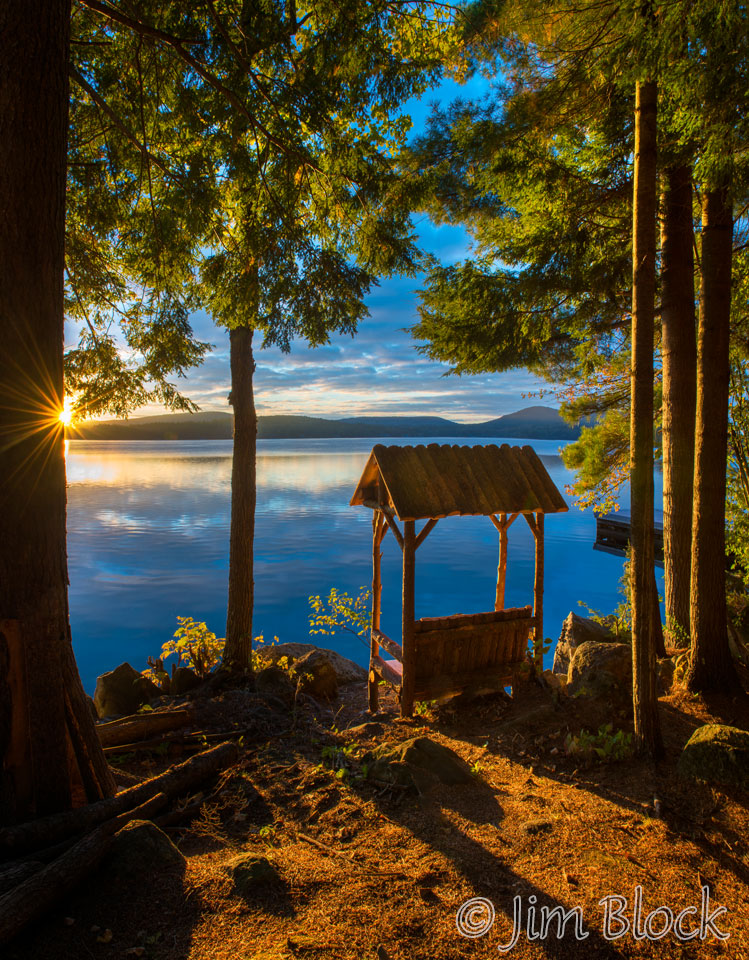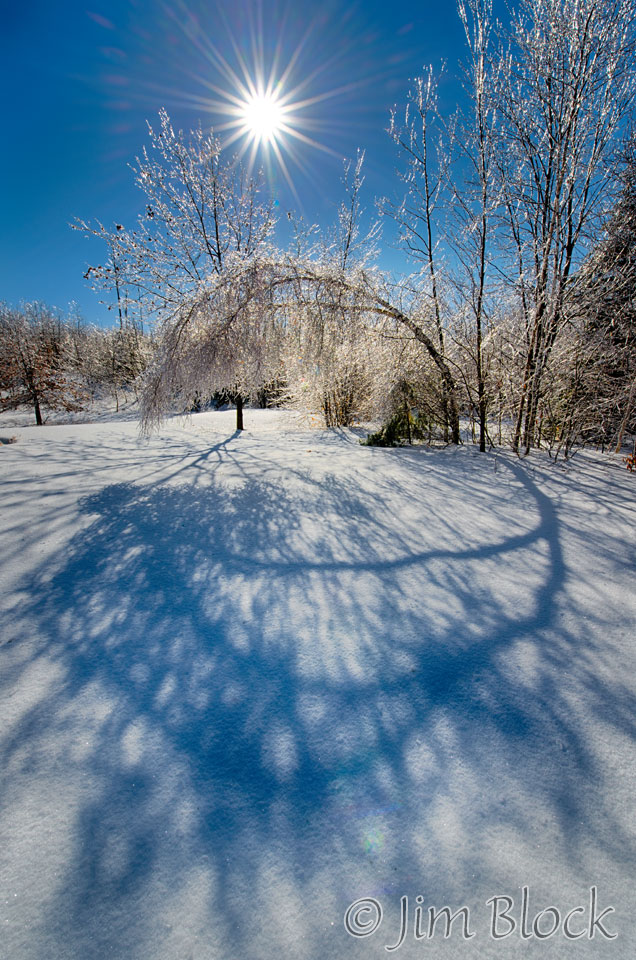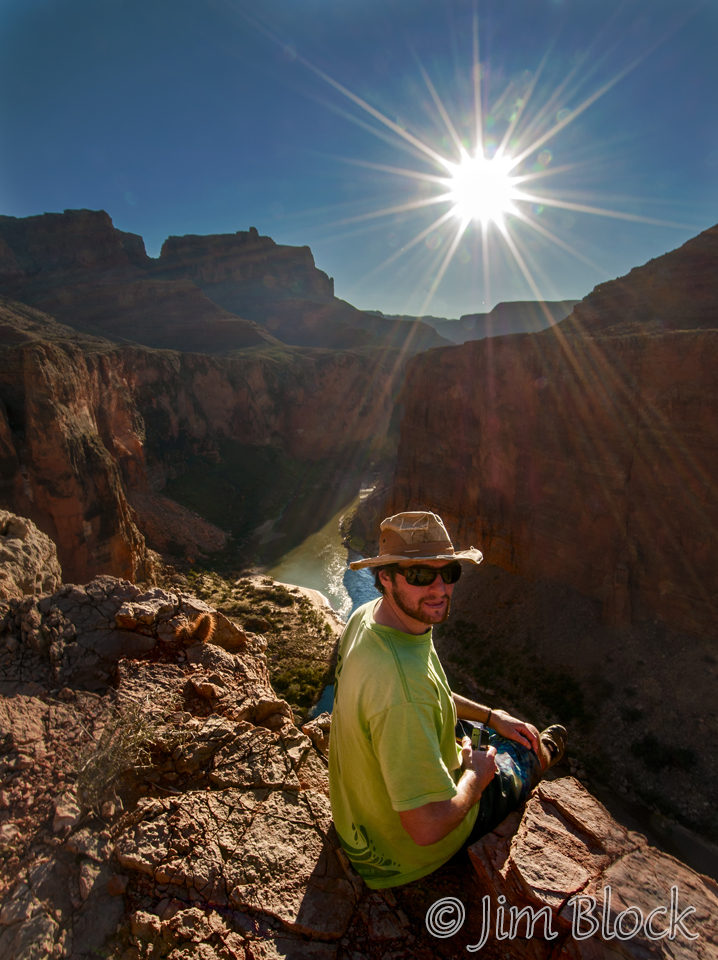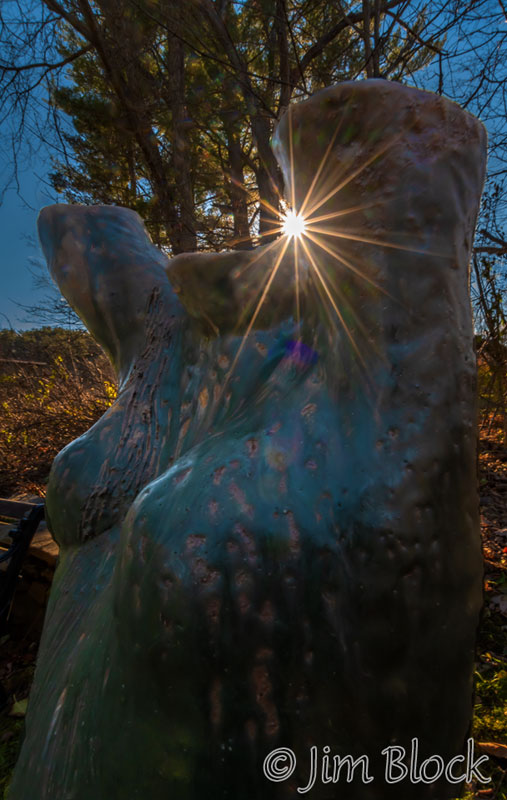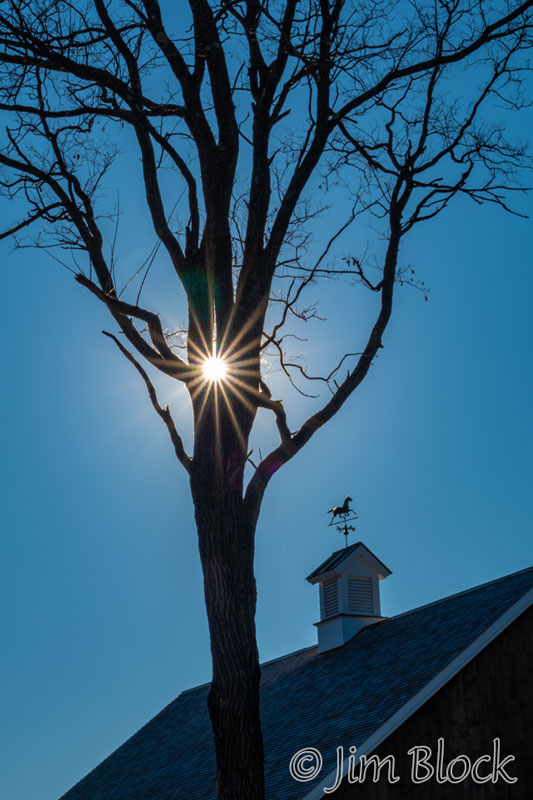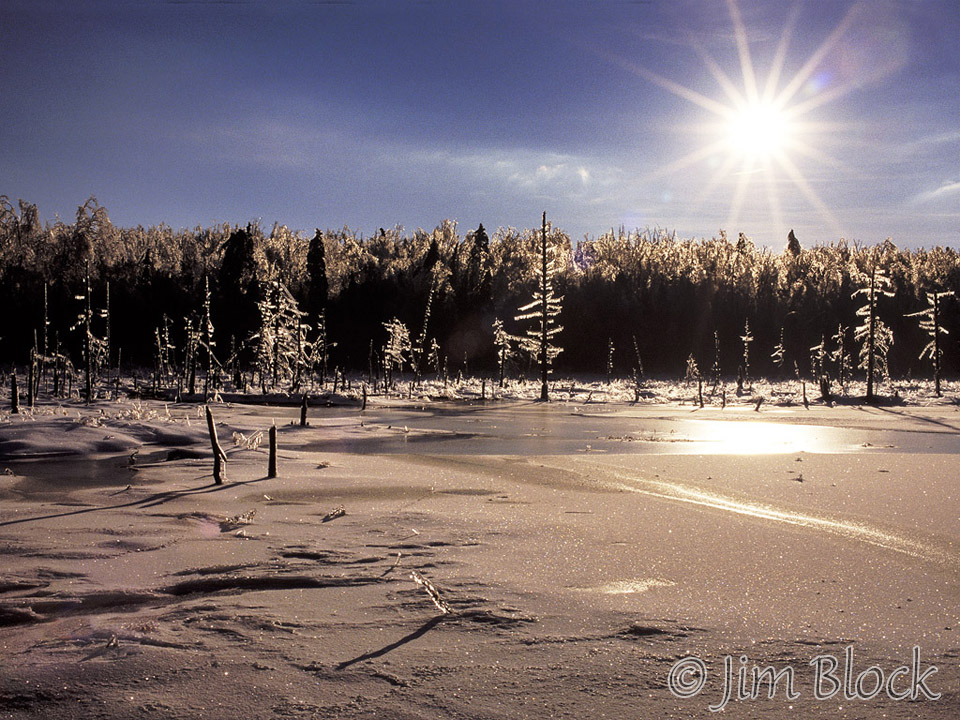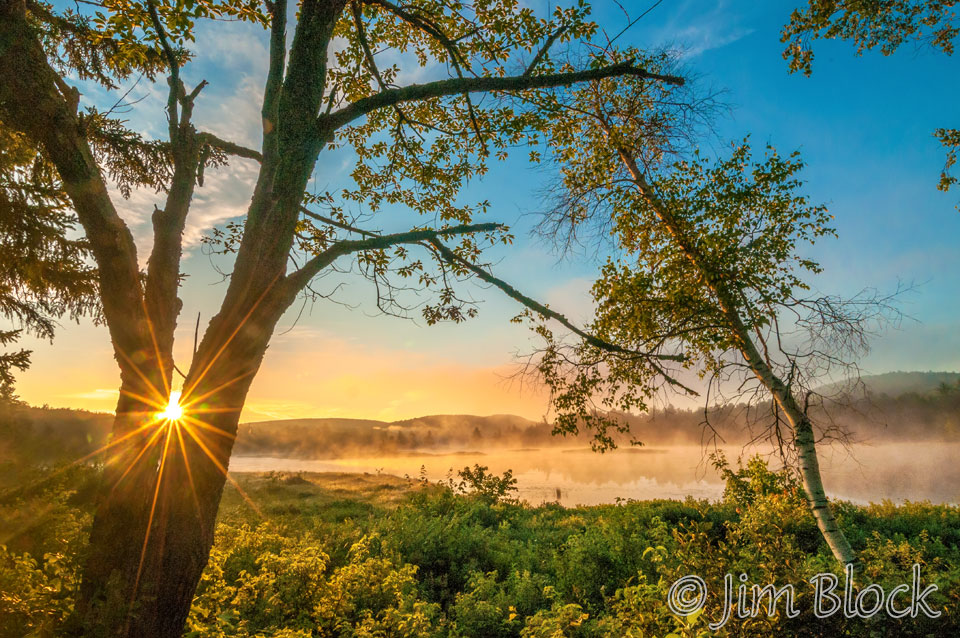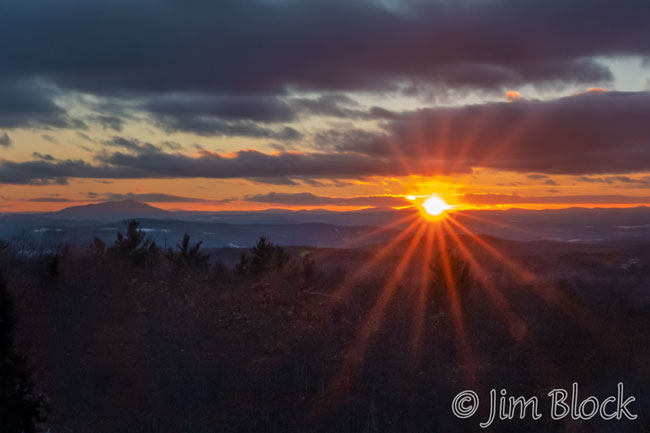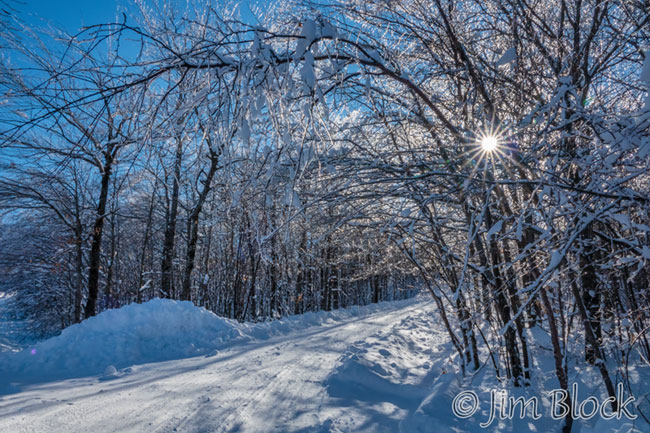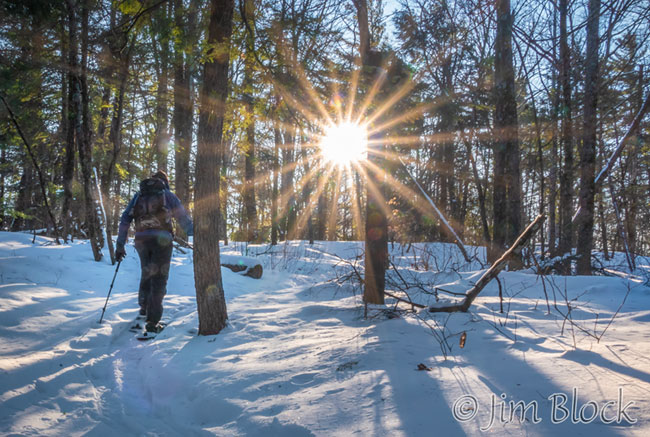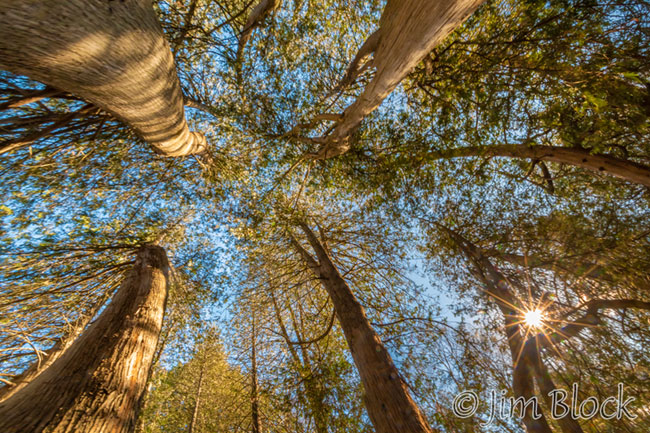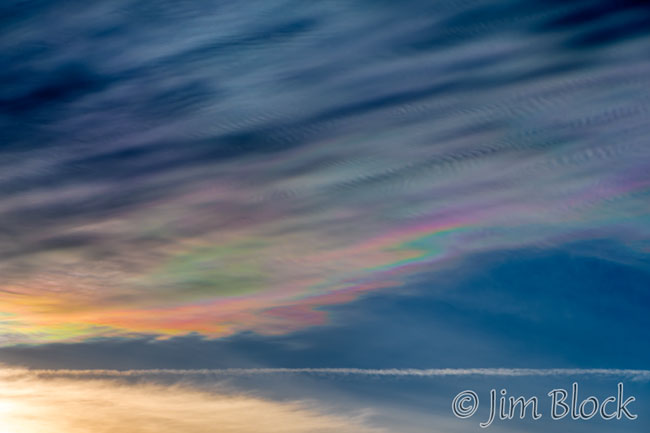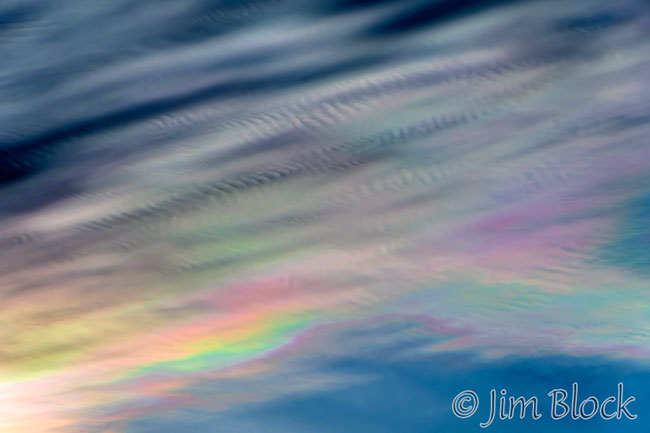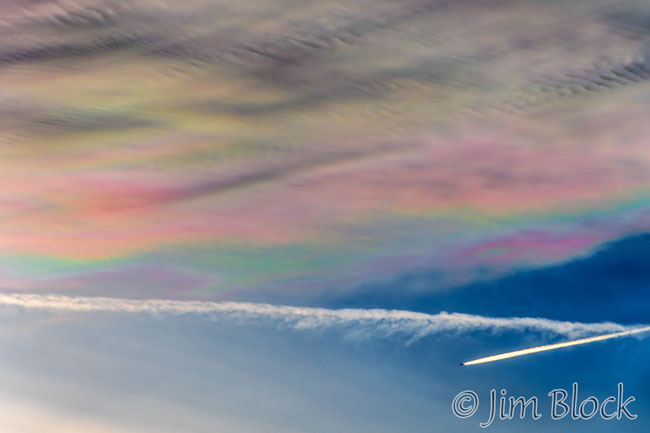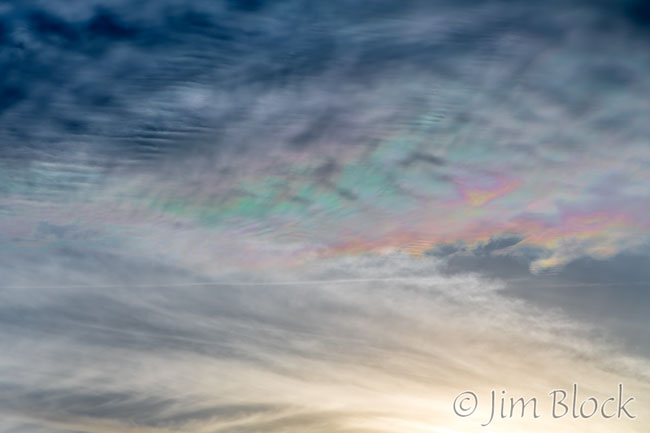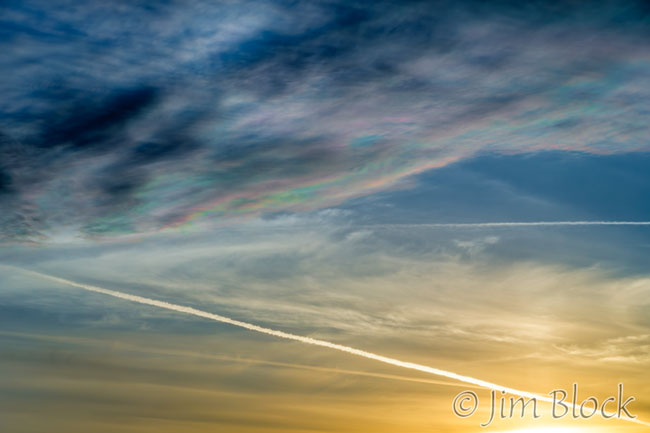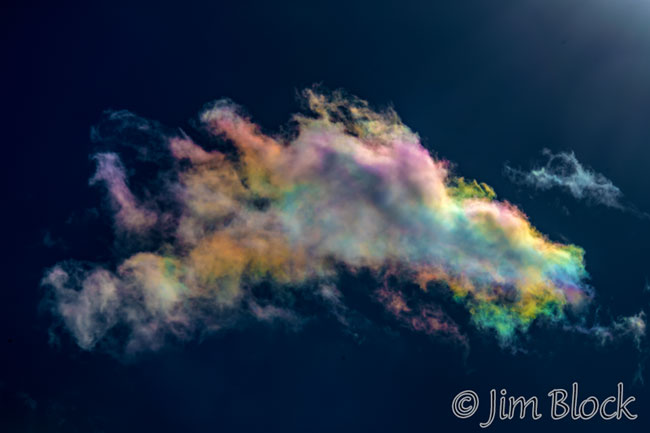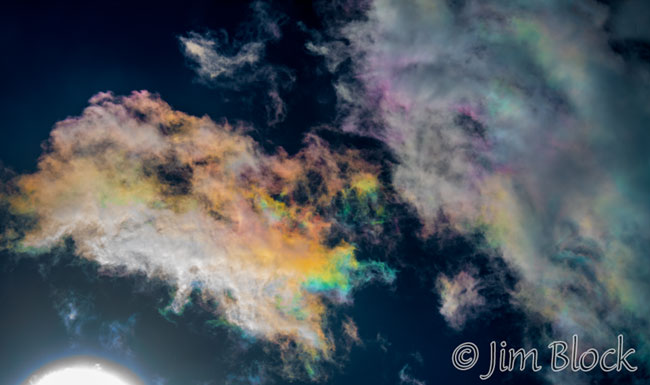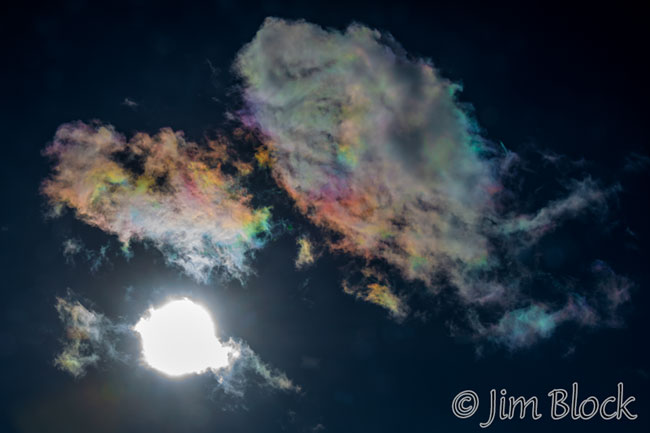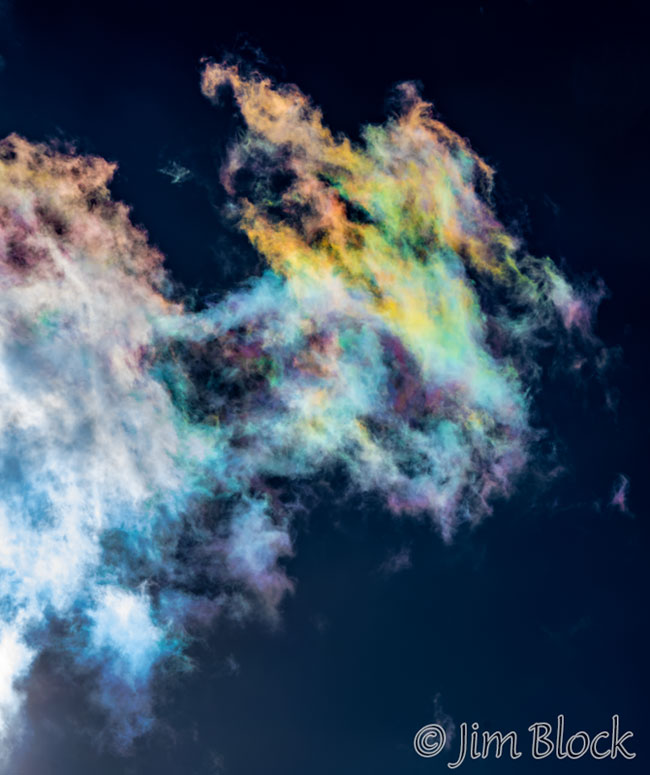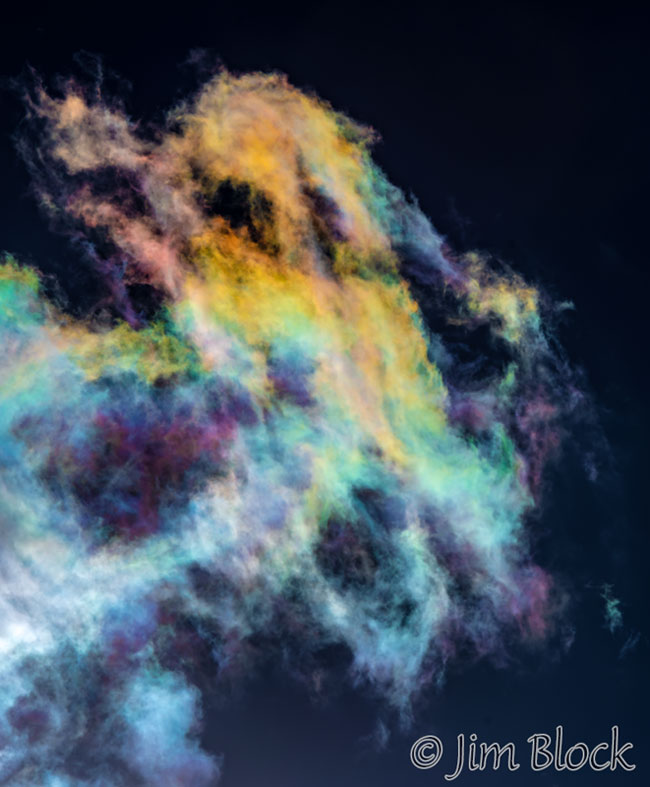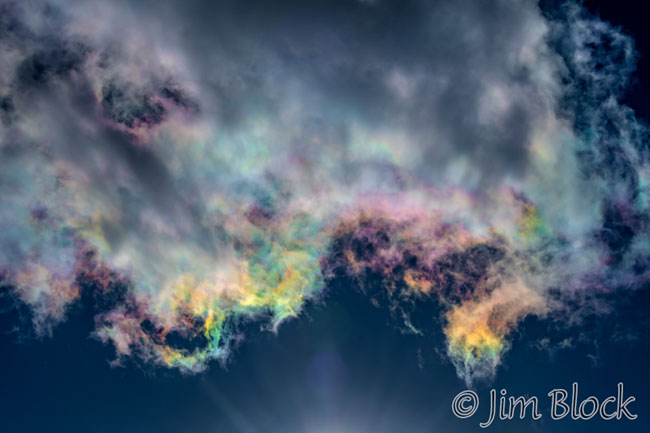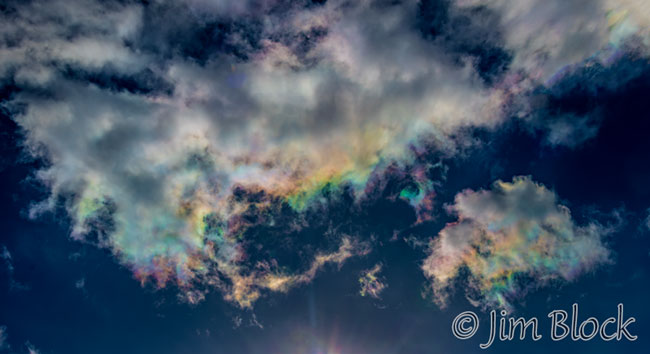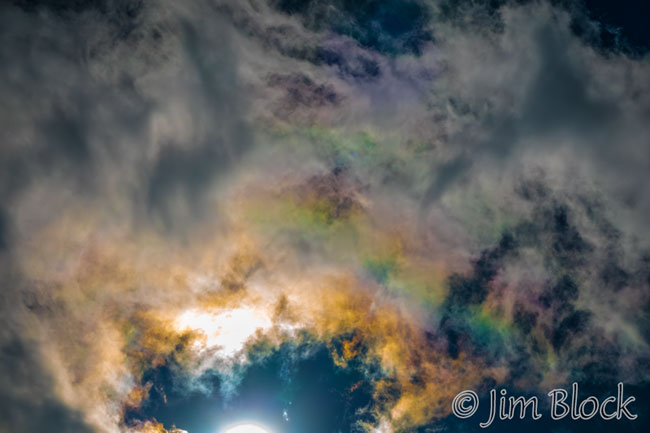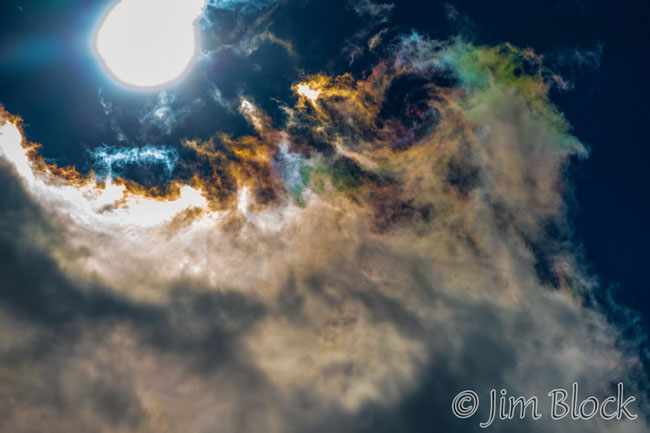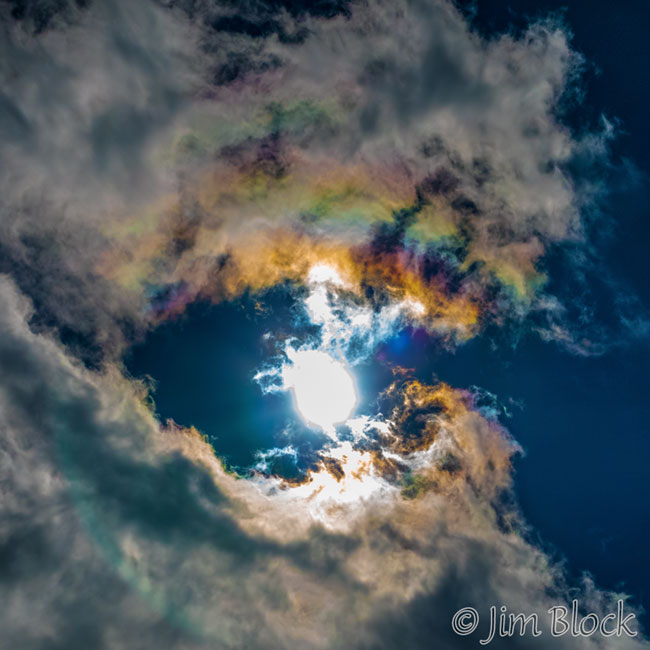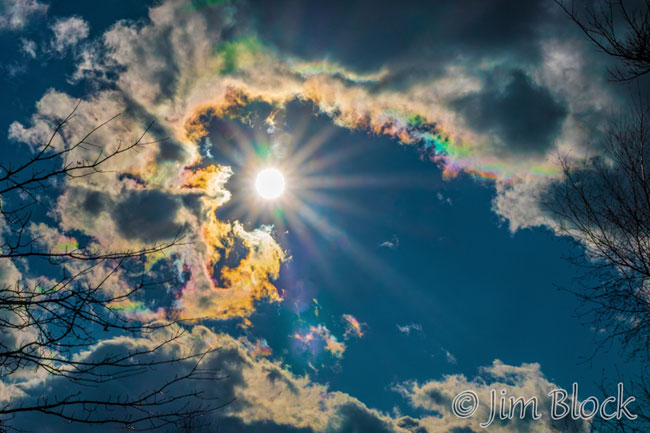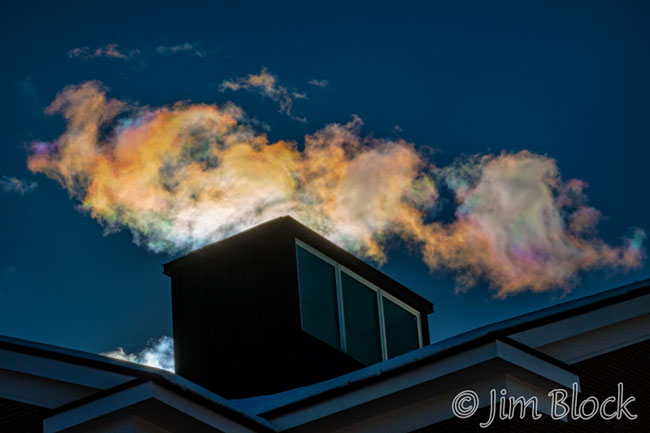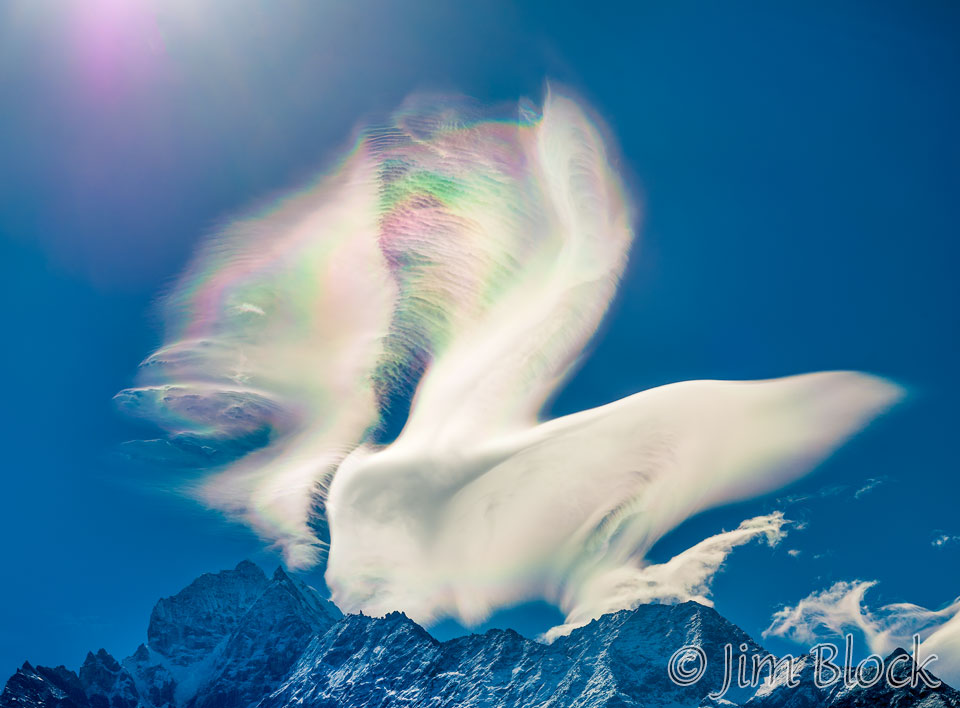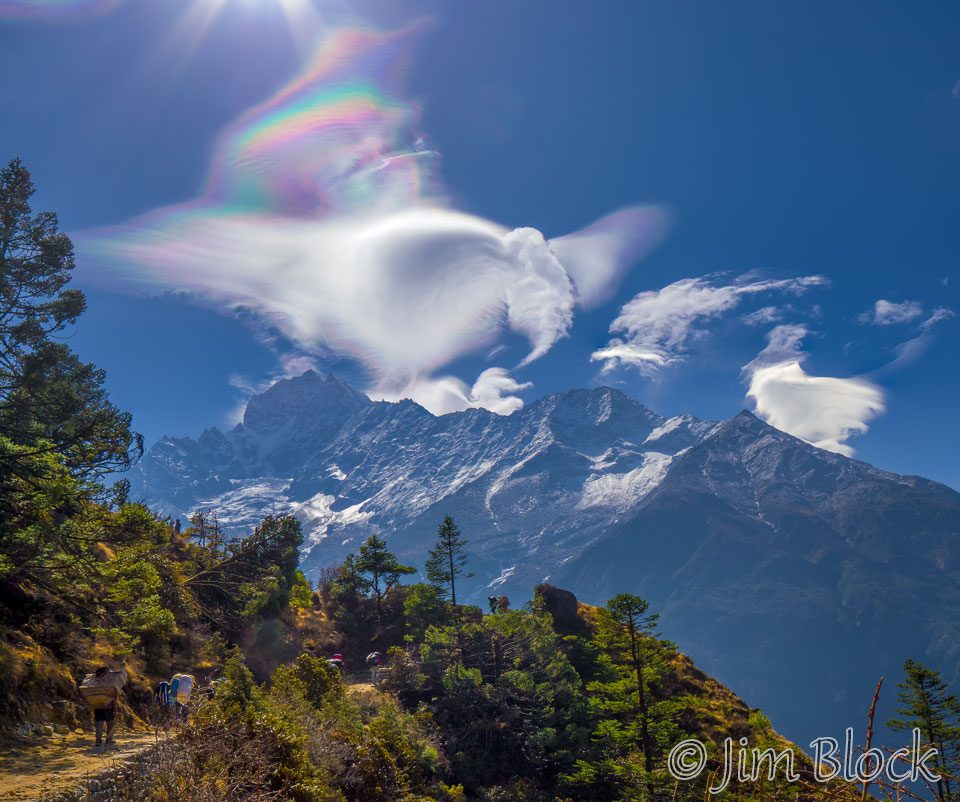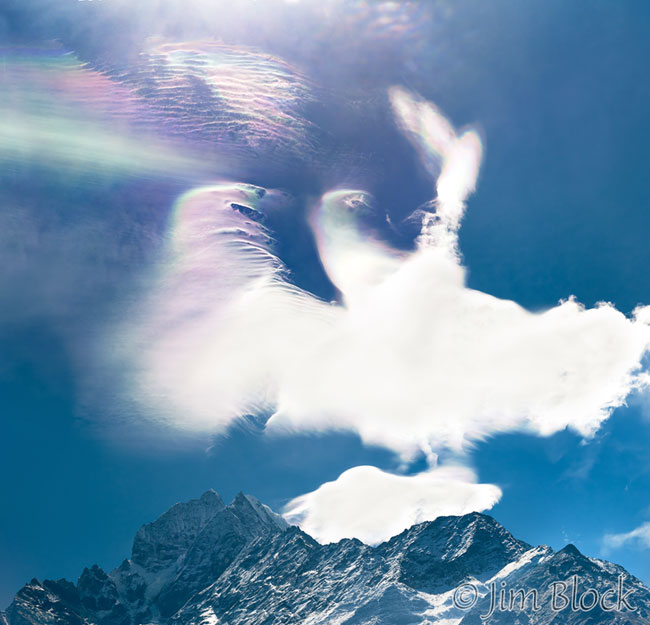Modern digital cameras can capture sights that are difficult to fully appreciate with the naked eye. Iridescent Clouds are but one example.
Cloud iridescence is a fairly common phenomenon that is rarely observed. That is because most people don’t like to look directly at the sun. Iridescent clouds normally occur within 30 degrees of the sun. Mirrorless digital cameras or DSLRs with live view afford a relatively safe way to explore for this phenomenon.
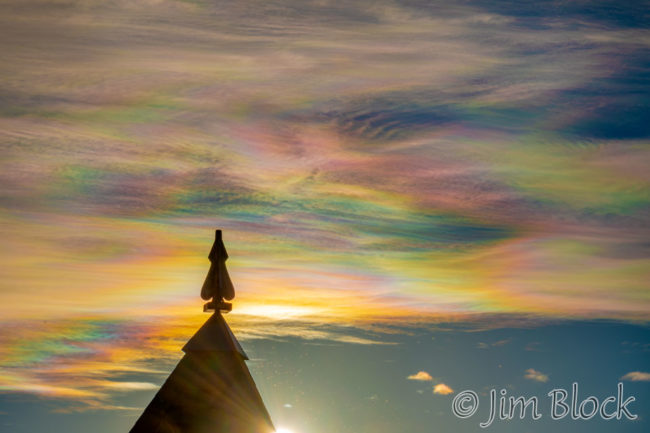
Iridescent clouds
Iridescent clouds are a diffraction phenomenon caused by small water droplets or ice crystals individually scattering light. Diffraction is the bending of light around small objects or sharp edges. In clouds the diffraction produces colors that are usually pastel, but they can be very vivid or mingled together.
Diffraction has a number of features of interest to photographers.
Diffraction limits sharpness
Diffraction is the reason all lenses are less sharp at very small apertures. Sure f/22 gives you a deep depth of field, but it also produces a less sharp image than a larger aperture. This is not related to the quality of the lens but merely due to the physics of light. When the aperture gets very small, images gets less sharp because of diffraction – the bending of light as it passed through the tiny aperture.
This is one of the reasons why point-and-shoot cameras rarely go beyond f/8. Since most have very small sensors, the actual focal length of the lens is very small and even f/8 is a very tiny aperture. If the aperture was smaller, the image would quickly get unacceptably fuzzy due to diffraction.
Sunstars
Diffraction can be used creatively by adding sunstars to your image. Sunstars are rays of light coming off the sun. The number of rays you’ll get depends on the number of diaphragm blades in your lens. Beyond this, Nikon lenses tend to produce more rays than Canon lenses. Sunstars are best created with small apertures, which means a combination of short focal length (a wide-angle lens) and large f-number.
Here are some examples of sunstars.
Back to cloud iridescence
Iridescent clouds can be seen at any time during the year, but they are more common in autumn and early winter. You can learn to look for this phenomenon, carefully shielding your eyes from the sun, by recognizing the cloud types that tend to produce cloud iridescence.
Perhaps the loveliest iridescence are produced by cirrus clouds, which are generally characterized by thin, wispy strands, like in the first photo above, from Monhegan Island. Part of the sun was behind the Monhegan Community Church and most of the rest of the sun was just out of the frame.
Cirrocumulus and altocumulus clouds show lovely iridescent hues arranged in stripes, bands, rings, and “eyes”, similar to the photos below.
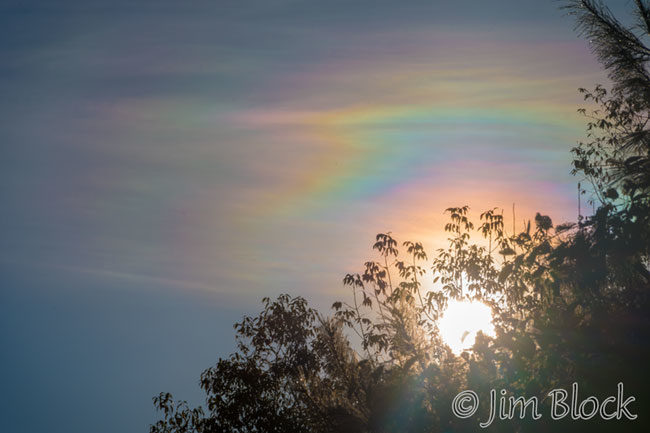
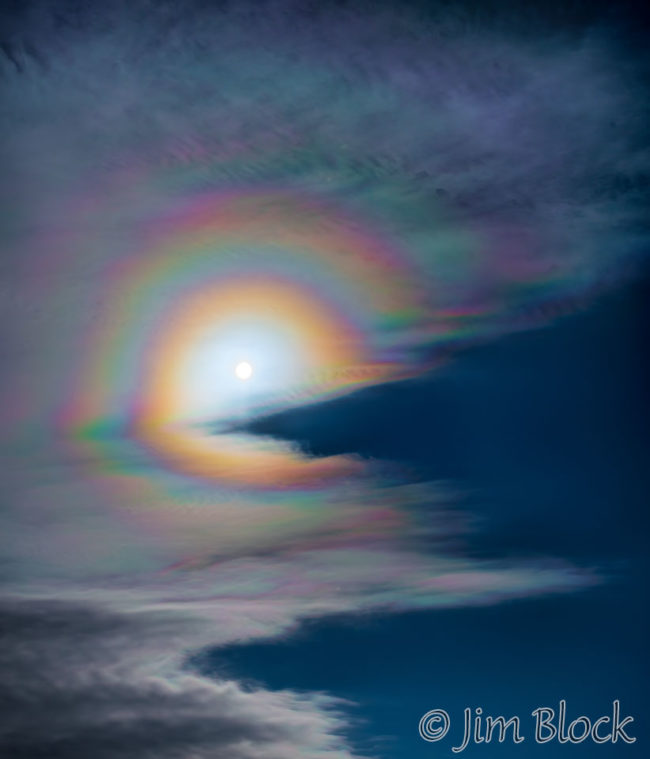
Cumulus clouds show iridescence only at the edges, as can be seen in the photo below taken from my home.
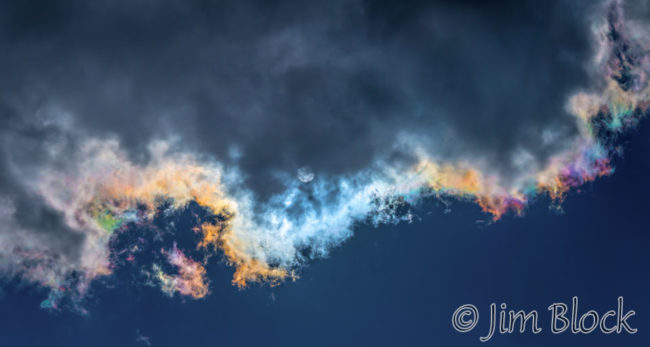
Below are iridescent clouds seen briefly from Lebanon, NH on February 13, 2018. The streaks are airplane contrails.
I observed this amazing show of iridescent clouds for about 40 minutes from my Etna, NH home on January 31, 2019.
On three separate occasions during February, 2019, I observed cloud iridescence from Hanover, NH.
Here is one from March 23, 2019.
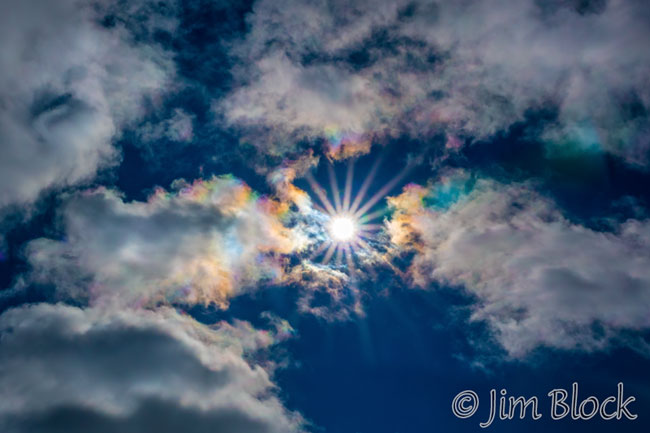
Iridescence and the Moon
Cloud iridescence can also appear around the moon, as seen in the photos below taken from my home.
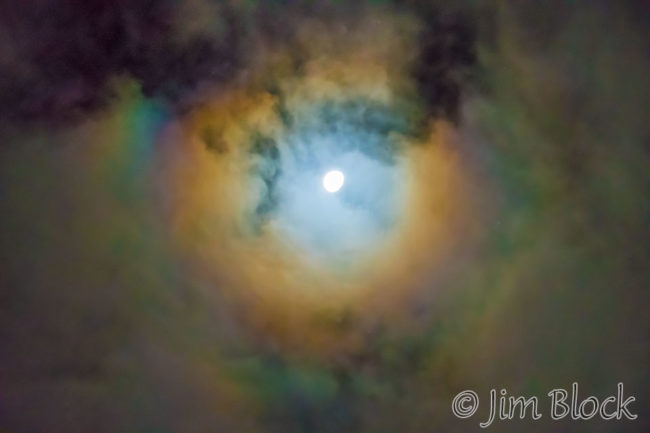
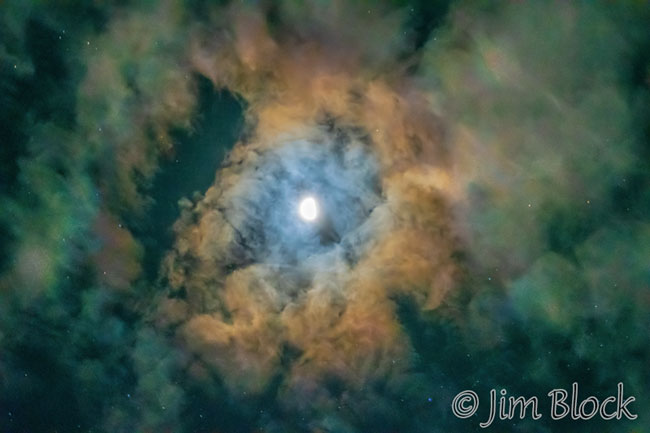
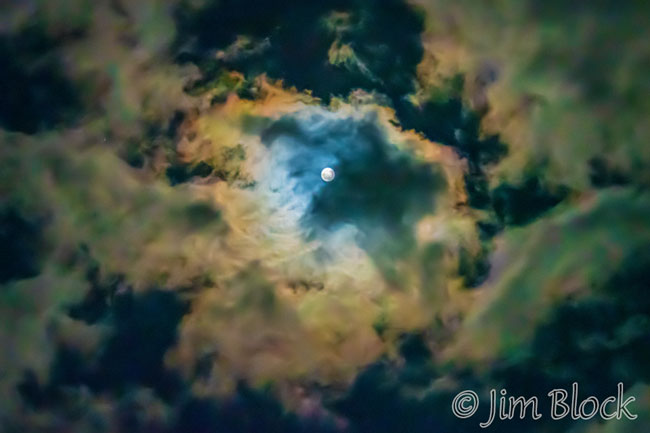
How to expose
The iridescent cloud photos above were shot with a fairly wide angle lens at various Exposure Compensations, usually between -1 and -3. Experiment and shoot a lot. Sometimes iridescent clouds last a long time and sometimes, poof, they are gone. Don’t zoom in too close; often the colors stretch out farther than you think.
Drama over Thamserku
One of the most dramatic cloud shows I have ever witnessed occurred near the end of a month long trek in Nepal from Jiri to Kala Patthar (18,514 ft) and Everest Base Camp by way of two high passes, Renjo La and Cho La. We set off one morning for a walk to Namche, the “Sherpa capital”, before carrying on to Monjo. Before leaving Khumjung, I noticed some interesting and beautiful clouds forming to the southeast. But our trail took us downhill through woods and, for about an hour, our view was blocked.
When Thamserku (21,729 ft) finally came into view, we were amazed that the clouds were not only still there, but they were even more dramatic. They seemed to change shape every time we looked up. The show lasted for over an hour, but once we reached Namche our view was again largely blocked. Here are three of the photos I took of this amazing display of clouds formed by wind over a high mountain.
If you are interested in other things you can photograph in the sky, please CLICK HERE.

